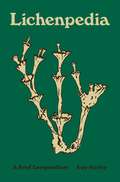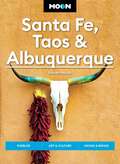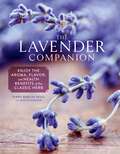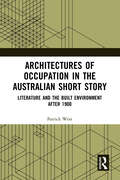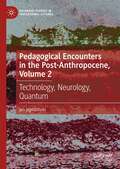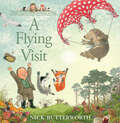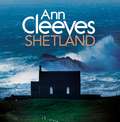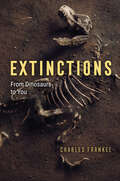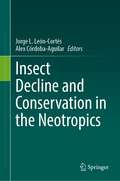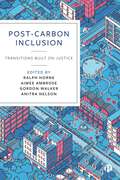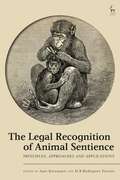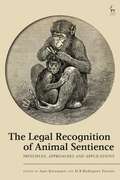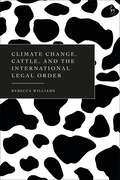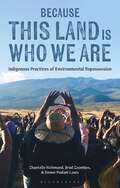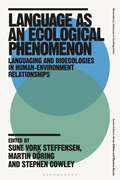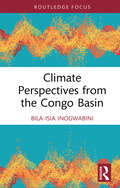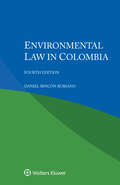- Table View
- List View
Lichenpedia: A Brief Compendium (Pedia Books #11)
by Kay HurleyAn illustrated mini-encyclopedia about the weird and wonderful world of lichensLichenpedia is a delightfully entertaining and beautifully illustrated A–Z treasury about the strange, obscure, and remarkable world of lichens, from their unique and essential roles in nature and the ways they are used in dyeing, brewing, and drug-making to how they have inspired writers and artists, from Henry David Thoreau to modern painters.In 100 brief entries written in a vivid, lively style, Kay Hurley introduces key aspects of lichen biology, environmental roles, emerging uses, scientific history, and myth. She describes the variety of forms that lichens take, from leafy to filamentous to things reminiscent of skin diseases, with imaginative names like witch&’s hair. She explains the surprising ways that birds and beasts—from reindeer and moose down to tiny tardigrades—use lichens, and how lichens survive in extreme environments, from deserts to Antarctica to outer space. Hurley also introduces some of the innovators who have advanced the knowledge of lichens, from the ancient Greek philosopher Theophrastus to today&’s professional lichenologists.With charming drawings by Susan Adele Edwards, Lichenpedia promises to put you in touch with the natural world in a new way by opening your eyes to these vital organisms, which are all around us, hidden in plain sight.Features a cloth cover with an elaborate foil-stamped design
Lichenpedia: A Brief Compendium (Pedia Books #11)
by Kay HurleyAn illustrated mini-encyclopedia about the weird and wonderful world of lichensLichenpedia is a delightfully entertaining and beautifully illustrated A–Z treasury about the strange, obscure, and remarkable world of lichens, from their unique and essential roles in nature and the ways they are used in dyeing, brewing, and drug-making to how they have inspired writers and artists, from Henry David Thoreau to modern painters.In 100 brief entries written in a vivid, lively style, Kay Hurley introduces key aspects of lichen biology, environmental roles, emerging uses, scientific history, and myth. She describes the variety of forms that lichens take, from leafy to filamentous to things reminiscent of skin diseases, with imaginative names like witch&’s hair. She explains the surprising ways that birds and beasts—from reindeer and moose down to tiny tardigrades—use lichens, and how lichens survive in extreme environments, from deserts to Antarctica to outer space. Hurley also introduces some of the innovators who have advanced the knowledge of lichens, from the ancient Greek philosopher Theophrastus to today&’s professional lichenologists.With charming drawings by Susan Adele Edwards, Lichenpedia promises to put you in touch with the natural world in a new way by opening your eyes to these vital organisms, which are all around us, hidden in plain sight.Features a cloth cover with an elaborate foil-stamped design
Moon Santa Fe, Taos & Albuquerque: Pueblos, Art & Culture, Hiking & Biking (Moon U.S. Travel Guide)
by Steven Horak Moon Travel GuidesExplore the eccentric art installations, historic adobe pueblos, and rugged high desert trails of the Land of Enchantment with Moon Santa Fe, Taos & Albuquerque. Inside you'll find:Flexible itineraries for art-lovers, outdoors enthusiasts, and more, including weekend getaways and a six-day road trip to see all three cities Outdoor adventures: Race down the slopes of Taos Ski Valley or mountain bike through stands of piñon and juniper near Santa Fe. Hike through thick alpine forests, raft the wild rapids of the Rio Grande Gorge, or marvel at the best view in New Mexico from a hot air balloon. Wander around the archeological sites and cave apartments of Bandelier National Monument, spot elk in Valles Caldera National Preserve, or trek alongside ancient rock carvings at Petroglyph National Monument Top experiences and unique activities: Mingle with local artists in the vibrant galleries of Santa Fe, visit Georgia O'Keefe's studio at Ghost Ranch, and relax at a world-class spa. Observe a traditional dance ceremony at a pueblo, admire handmade art and jewelry at the Santa Fe Indian Market, and learn about Native American history at one of the region's many cultural museums. Take a scenic ride on a historic steam-driven train or glide above Albuquerque on the longest aerial tram in the Americas Tastes of the Southwest: Dive into traditional New Mexican dishes drenched in spicy red and green chile sauces or indulge in a juicy green chile cheeseburger. Sip on a sunset margarita at a mellow open-air bar or taste local spirits in a trendy cocktail lounge. Take a culinary tour of Santa Fe's growing food truck scene or explore Albuquerque's lively beer culture Expert insight from Santa Fe local Steven Horak Vibrant full-color photos and detailed maps throughoutHelpful background information on the landscape, wildlife, climate, and local culture With Moon Santa Fe, Taos & Albuquerque's practical tips and local insight, you can experience New Mexico your way. Exploring more of the Southwest? Try Moon Phoenix, Scottsdale & Sedona or Moon Southwest Road Trip. Hitting the parks? Try Moon Grand Canyon or Moon Zion & Bryce.About Moon Travel Guides: Moon was founded in 1973 to empower independent, active, and conscious travel. We prioritize local businesses, outdoor recreation, and traveling strategically and sustainably. Moon Travel Guides are written by local, expert authors with great stories to tell—and they can't wait to share their favorite places with you. For more inspiration, follow @moonguides on social media.
The Lavender Companion: Enjoy the Aroma, Flavor, and Health Benefits of This Classic Herb
by Jessica Dunham Terry Barlin VesciA celebration of lavender featuring stunning photographs; favorite recipes for the kitchen, pantry, and body care products; along with fascinating lore and gardening guidance from a destination lavender farm. Lavender has long been a favorite herb with its amazing, resinous fragrance; calming qualities; and unique flavor for seasoning food. This lavishly photographed celebration of the beloved herb, written by an acclaimed lavender farmer and cooking instructor, is brimming over with inspiration and ideas for bringing the fragrance and flavor of lavender into daily life. The book profiles the most popular lavender varieties and their recommended uses, along with the history, lore, and traditional medicinal uses. More than 40 recipes showcase lavender in delicious dishes from the kitchen as well homemade craft and body products. Tips for success with lavender in the garden complete this perfect gift for every lavender lover.
Architectures of Occupation in the Australian Short Story: Literature and the Built Environment after 1900
by Patrick WestPatrick West’s Architectures of Occupation in the Australian Short Story cultivates the potential for literary representations of architectural space to contribute to the development of a contemporary politics of Australian post-colonialism.West argues that the predominance of tropes of place within cultural and critical expressions of Australian post-colonialism should be re-balanced through attention to spatial strategies of anti-colonial power. To elaborate the raw material of such strategies, West develops interdisciplinary close readings of keynote stories within three female-authored, pan-twentieth century, Australian short-story collections: Bush Studies by Barbara Baynton (1902); Kiss on the Lips and Other Stories by Katharine Susannah Prichard (1932); and White Turtle: A Collection of Short Stories by Merlinda Bobis (1999). The capacity of the short-story form to prompt creative and politically germinal engagements with species of space associated with architecture and buildings is underscored. Relatedly, West argues that the recent resurgence of binary thought—on local, national, and international scales—occasions an approach to the short-story collections shaped by binary relationships like a dichotomy of inside and outside. Concluding his argument, West connects the literary and architectural critiques of the story collections to the wicked problem, linked to ongoing colonial violences, of improving Australian Indigenous housing outcomes.Innovative and interdisciplinary, this book will be of interest to scholars and students of Literary, Architectural, and Postcolonial Studies. .
Architectures of Occupation in the Australian Short Story: Literature and the Built Environment after 1900
by Patrick WestPatrick West’s Architectures of Occupation in the Australian Short Story cultivates the potential for literary representations of architectural space to contribute to the development of a contemporary politics of Australian post-colonialism.West argues that the predominance of tropes of place within cultural and critical expressions of Australian post-colonialism should be re-balanced through attention to spatial strategies of anti-colonial power. To elaborate the raw material of such strategies, West develops interdisciplinary close readings of keynote stories within three female-authored, pan-twentieth century, Australian short-story collections: Bush Studies by Barbara Baynton (1902); Kiss on the Lips and Other Stories by Katharine Susannah Prichard (1932); and White Turtle: A Collection of Short Stories by Merlinda Bobis (1999). The capacity of the short-story form to prompt creative and politically germinal engagements with species of space associated with architecture and buildings is underscored. Relatedly, West argues that the recent resurgence of binary thought—on local, national, and international scales—occasions an approach to the short-story collections shaped by binary relationships like a dichotomy of inside and outside. Concluding his argument, West connects the literary and architectural critiques of the story collections to the wicked problem, linked to ongoing colonial violences, of improving Australian Indigenous housing outcomes.Innovative and interdisciplinary, this book will be of interest to scholars and students of Literary, Architectural, and Postcolonial Studies. .
Pedagogical Encounters in the Post-Anthropocene, Volume 2: Technology, Neurology, Quantum (Palgrave Studies in Educational Futures)
by jan jagodzinskiAs a follow up to Pedagogical Encounters in the Post-Anthropocene, Volume I, this book addresses three major areas in response to the post-Anthropocene: Technology, Neurology, Quantum. Each of these areas is broadly addressed in relation to the concerns that have arisen both theoretically and educationally. As in Volume I, the author terms these to be encounters as each area presents a particular problematic when addressing the phase change that the planet is undergoing where the anthropogenic labour of global humanity is contributing to climate change, endangering our very existence. Technology in education has been a significant development. There is a concerted effort to review this development placing stress on the rise of learning machines and algorithms. In the second encounter the vast literature on neurology is addressed, especially neurodiversity and the various symptoms that have emerged in the post-Anthropocene era. The last section reviews issues related to quantum theory as this is fundamental to tensions between physics and metaphysics. The volume concludes with the author’s own pedagogical proposal for the future.
A Flying Visit (A Percy the Park Keeper Story)
by Nick ButterworthAn exciting picture book about much-loved Percy the Park Keeper and his animal friends from the bestselling creator of One Snowy Night.
Shetland: A Shetland Mystery (Shetland Ser. #7)
by Ann CleevesIn this gloriously illustrated companion to her crime novels featuring Inspector Jimmy Perez, Ann Cleeves takes readers through a year on Shetland. Discover its past, meet its people, celebrate its festivals and see how the flora and fauna of the islands change with the seasons.An archipelago of more than a hundred islands, Shetland is the one of the most remote places in the United Kingdom. Its fifteen hundred miles of shore mean that wherever one stands, there is a view of the sea. It has sheltered voes and beaches and dramatically exposed cliffs, lush meadows full of wild flowers in the summer and bleak hilltops where only the hardiest of plants will grow. It is a place where traditions are valued and celebrated, but new technologies and ways of working are also embraced. Whether it is the drama of the Viking fire festival of Up Helly Aa in winter, or the piercing blue and hot pink of spring flowers on the clifftops, the long, white nights of midsummer or the fierce gales and high tides of autumn, Shetland is vividly captured in all its bleak and special beauty.A book to treasure, full of photos and insightful notes about the stunning location of the Shetland series, now a major BBC One drama starring Douglas Henshall.
Extinctions: From Dinosaurs to You
by Charles FrankelA compelling answer to an important question: Can past mass extinctions teach us how to avoid future planetary disaster? On its face, the story of mass extinction on Earth is one of unavoidable disaster. Asteroid smashes into planet; goodbye dinosaurs. Planetwide crises seem to be beyond our ability to affect or evade. Extinctions argues that geological history tells an instructive story, one that offers important signs for us to consider. When the asteroid struck, Charles Frankel explains, it set off a wave of cataclysms that wore away at the global ecosystem until it all fell apart. What if there had been a way to slow or even turn back these tides? Frankel believes that the answer to this question holds the key to human survival. Human history, from the massacre of Ice Age megafauna to today’s industrial climate change, has brought the planet through another series of cataclysmic events. But the history of mass extinction together with the latest climate research, Frankel maintains, shows us a way out. If we curb our destructive habits, particularly our drive to kill and consume other species, and work instead to conserve what biodiversity remains, the Earth might yet recover. Rather than await decisive disaster, Frankel argues that we must instead take action to reimagine what it means to be human. As he eloquently explains, geological history reminds us that life is not eternal; we can disappear, or we can become something new and continue our evolutionary adventure.
Extinctions: From Dinosaurs to You
by Charles FrankelA compelling answer to an important question: Can past mass extinctions teach us how to avoid future planetary disaster? On its face, the story of mass extinction on Earth is one of unavoidable disaster. Asteroid smashes into planet; goodbye dinosaurs. Planetwide crises seem to be beyond our ability to affect or evade. Extinctions argues that geological history tells an instructive story, one that offers important signs for us to consider. When the asteroid struck, Charles Frankel explains, it set off a wave of cataclysms that wore away at the global ecosystem until it all fell apart. What if there had been a way to slow or even turn back these tides? Frankel believes that the answer to this question holds the key to human survival. Human history, from the massacre of Ice Age megafauna to today’s industrial climate change, has brought the planet through another series of cataclysmic events. But the history of mass extinction together with the latest climate research, Frankel maintains, shows us a way out. If we curb our destructive habits, particularly our drive to kill and consume other species, and work instead to conserve what biodiversity remains, the Earth might yet recover. Rather than await decisive disaster, Frankel argues that we must instead take action to reimagine what it means to be human. As he eloquently explains, geological history reminds us that life is not eternal; we can disappear, or we can become something new and continue our evolutionary adventure.
Insect Decline and Conservation in the Neotropics
by Jorge L. León-Cortés Alex Córdoba-AguilarThis book provides for the first time an integrative analysis of the major drivers of decline and threats of insects and related arthropods in the Neotropical region. Thus, it is an urgent first step towards filling an information gap in this region. It identifies the main causes of decline, provides and discusses examples from the better-studied insect faunas to develop and advance principles and practical conservation management for the rich Neotropical insect faunas. The book is aimed at students, naturalists, environmental managers, and others who have training in entomology/insect ecology and can apply the results of surveys of key insect faunas to assess their vulnerability to environmental change and establish guidelines for their conservation.
Post-Carbon Inclusion: Transitions Built on Justice
by Ralph Horne, Aimee Ambrose, Gordon Walker and Anitra NelsonThis collection pays unique attention to the highly challenging problems of addressing inequality within decarbonisation – particularly under-explored aspects, such as high consumption, degrowth approaches and perverse outcomes. Contributors point out means and possibilities of the transition from high carbon inequalities to post-carbon inclusion. They apply a variety of conceptual and methodological approaches in all-inclusive ways to diverse challenges, such as urban heating and retrofitting. Richly illustrated with case studies from the city to the household, this book critically examines ‘just transitions’ to achieve sustainable societies in the future.
Post-Carbon Inclusion: Transitions Built on Justice
by Gordon Walker Ralph Horne Anitra Nelson Aimee AmbroseThis collection pays unique attention to the highly challenging problems of addressing inequality within decarbonisation – particularly under-explored aspects, such as high consumption, degrowth approaches and perverse outcomes. Contributors point out means and possibilities of the transition from high carbon inequalities to post-carbon inclusion. They apply a variety of conceptual and methodological approaches in all-inclusive ways to diverse challenges, such as urban heating and retrofitting. Richly illustrated with case studies from the city to the household, this book critically examines ‘just transitions’ to achieve sustainable societies in the future.
The Legal Recognition of Animal Sentience: Principles, Approaches and Applications
by Jane Kotzmann and MB Rodriguez FerrereThis book explores the movement towards the recognition of animal sentience in the law. It explores some first principles underpinning the recognition of animal sentience, including the nature and scope of sentience provisions, the connection between sentience and empathy, drafting issues, and the relationship between sentience recognition and animal rights. The book highlights the operation of animal sentience provisions in several jurisdictions throughout the world and considers some sector-specific applications and limitations of animal sentience recognition.The first book of its kind, it draws together different perspectives as to what this novel turn in the law might mean and where it might lead. The chapters provide a full picture of what the recognition of animal sentience might entail for humans, animals, and our environment, as well as the experiences of different legal jurisdictions in pursuing recognition of animal sentience.This collection is an essential read for both practitioners and academics alike, as well as any group seeking to advance the interests of non-human animals.
The Legal Recognition of Animal Sentience: Principles, Approaches and Applications
This book explores the movement towards the recognition of animal sentience in the law. It explores some first principles underpinning the recognition of animal sentience, including the nature and scope of sentience provisions, the connection between sentience and empathy, drafting issues, and the relationship between sentience recognition and animal rights. The book highlights the operation of animal sentience provisions in several jurisdictions throughout the world and considers some sector-specific applications and limitations of animal sentience recognition.The first book of its kind, it draws together different perspectives as to what this novel turn in the law might mean and where it might lead. The chapters provide a full picture of what the recognition of animal sentience might entail for humans, animals, and our environment, as well as the experiences of different legal jurisdictions in pursuing recognition of animal sentience.This collection is an essential read for both practitioners and academics alike, as well as any group seeking to advance the interests of non-human animals.
Climate Change, Cattle, and the International Legal Order
by Rebecca WilliamsLivestock food systems need to be rapidly rethought to tackle the global climate crisis. This book examines how climate concerns for the livestock sector are governed in international law and addresses the sector's inclusion (or lack thereof) across the international governance of climate change, agriculture, forests and trade.The book provides a wide-ranging analysis of legal regimes at the international level that affect emissions from cattle (and where relevant, livestock more broadly). On this basis, tensions, interactions, and common themes for livestock emissions mitigation across the international climate change, forestry, agricultural and agri-trade regime are identified. This showcases where productive synergies and damaging tensions have emerged across the cross-cutting nature of livestock governance, enabling goals of fairer and more effective emissions mitigation for the sector to be achieved. In addition to addressing issues such as food security and public health, the book highlights the problem of affluence in reducing cattle emissions from meat consumption. This key insight is significant in terms of tackling future livestock emissions trajectories, particularly in relation to securing climate justice within the agricultural sector and securing equitable and effective livestock solutions. The book is a key text for all those with an interest in the legal governance of climate change and agriculture, adding to the timely debate on the future sustainability of the global diet and the relationship between affluence and climate change.
Climate Change, Cattle, and the International Legal Order
by Rebecca WilliamsLivestock food systems need to be rapidly rethought to tackle the global climate crisis. This book examines how climate concerns for the livestock sector are governed in international law and addresses the sector's inclusion (or lack thereof) across the international governance of climate change, agriculture, forests and trade.The book provides a wide-ranging analysis of legal regimes at the international level that affect emissions from cattle (and where relevant, livestock more broadly). On this basis, tensions, interactions, and common themes for livestock emissions mitigation across the international climate change, forestry, agricultural and agri-trade regime are identified. This showcases where productive synergies and damaging tensions have emerged across the cross-cutting nature of livestock governance, enabling goals of fairer and more effective emissions mitigation for the sector to be achieved. In addition to addressing issues such as food security and public health, the book highlights the problem of affluence in reducing cattle emissions from meat consumption. This key insight is significant in terms of tackling future livestock emissions trajectories, particularly in relation to securing climate justice within the agricultural sector and securing equitable and effective livestock solutions. The book is a key text for all those with an interest in the legal governance of climate change and agriculture, adding to the timely debate on the future sustainability of the global diet and the relationship between affluence and climate change.
Because This Land is Who We Are: Indigenous Practices of Environmental Repossession
by Chantelle RichmondBecause This Land Is Who We Are is an exploration of environmental repossession, told through a collaborative case study approach, and engaging with Indigenous communities in Canada (Anishinaabe), Hawai'i (Kanaka Maoli) and Aotearoa (Maori). The co-authors are all Indigenous scholars, community leaders and activists who are actively engaged in the movements underway in these locations, and able to describe the unique and common strategies of repossession practices taking place in each community. This open access book celebrates Indigenous ways of knowing, relating to and honouring the land, and the authors' contributions emphasize the efforts taking place in their own Indigenous land. Through engagement with these varying cultural imperatives, the wider goal of Because This Land Is Who We Are is to broaden both theoretical and applied concepts of environmental repossession, and to empower any Indigenous community around the world which is struggling to assert its rights to land.The ebook editions of this book are available open access under a CC BY-NC-ND 4.0 licence on bloomsburycollections.com. Open access was funded by Knowledge Unlatched.
Because This Land is Who We Are: Indigenous Practices of Environmental Repossession
by Chantelle RichmondBecause This Land Is Who We Are is an exploration of environmental repossession, told through a collaborative case study approach, and engaging with Indigenous communities in Canada (Anishinaabe), Hawai'i (Kanaka Maoli) and Aotearoa (Maori). The co-authors are all Indigenous scholars, community leaders and activists who are actively engaged in the movements underway in these locations, and able to describe the unique and common strategies of repossession practices taking place in each community. This open access book celebrates Indigenous ways of knowing, relating to and honouring the land, and the authors' contributions emphasize the efforts taking place in their own Indigenous land. Through engagement with these varying cultural imperatives, the wider goal of Because This Land Is Who We Are is to broaden both theoretical and applied concepts of environmental repossession, and to empower any Indigenous community around the world which is struggling to assert its rights to land.The ebook editions of this book are available open access under a CC BY-NC-ND 4.0 licence on bloomsburycollections.com. Open access was funded by Knowledge Unlatched.
Language as an Ecological Phenomenon: Languaging and Bioecologies in Human-Environment Relationships (Bloomsbury Advances in Ecolinguistics)
by Sune Vork Steffensen, Martin Döring and Stephen J. CowleyMoving beyond a more traditional view of language as a discrete sociocultural and cognitive entity that distorts our understanding of surrounding ecologies, this book argues that the starting point for ecolinguistics is an appreciation of language as not just about nature, but of nature. Exploring this conceptual change in the field, the book presents a process view in which language is substituted by languaging, emphasising the bioecologies that we cohabit with numerous other species. It puts forward this perspective by looking at the theoretical considerations behind the understanding of languaging as bioecological, and through examining languaging in various contexts and places. Drawing on examples from across the world, it addresses topics such as climate catastrophes, corporate narratives, questions of ecological leadership, the bioecological implications of the COVID pandemic, and relational landscapes. It also makes use of data from across multiple bioecological settings, including the dairy and agricultural industries.
Language as an Ecological Phenomenon: Languaging and Bioecologies in Human-Environment Relationships (Bloomsbury Advances in Ecolinguistics)
Moving beyond a more traditional view of language as a discrete sociocultural and cognitive entity that distorts our understanding of surrounding ecologies, this book argues that the starting point for ecolinguistics is an appreciation of language as not just about nature, but of nature. Exploring this conceptual change in the field, the book presents a process view in which language is substituted by languaging, emphasising the bioecologies that we cohabit with numerous other species. It puts forward this perspective by looking at the theoretical considerations behind the understanding of languaging as bioecological, and through examining languaging in various contexts and places. Drawing on examples from across the world, it addresses topics such as climate catastrophes, corporate narratives, questions of ecological leadership, the bioecological implications of the COVID pandemic, and relational landscapes. It also makes use of data from across multiple bioecological settings, including the dairy and agricultural industries.
Climate Perspectives from the Congo Basin (Routledge Focus on Environment and Sustainability)
by Bila-Isia InogwabiniThis book considers the global question of climate change from local perspectives in the context of Central Africa.Bila-Isia Inogwabini examines attempts made by the international community to respond to the global challenges posed by climate change in the Congo Basin and highlights that these attempts have so far produced limited results. Abject poverty and the lack of academic, technical, institutional and governance capacities have made it difficult for these solutions to take root in local conditions. Taking a novel perspective, Inogwabini argues that what is needed is not austerity in the use of natural resources but rather increased material affluence for these communities, which will enable individuals to create their own ways to survive through the tides of climate change. He considers factors including social inertia, climate skepticism and lack of political structure and presents a climate change action plan that is targeted at the local level in the Congo Basin.Overall, this volume will be of great interest to students and scholars of climate change, global development and African studies more broadly.
Climate Perspectives from the Congo Basin (Routledge Focus on Environment and Sustainability)
by Bila-Isia InogwabiniThis book considers the global question of climate change from local perspectives in the context of Central Africa.Bila-Isia Inogwabini examines attempts made by the international community to respond to the global challenges posed by climate change in the Congo Basin and highlights that these attempts have so far produced limited results. Abject poverty and the lack of academic, technical, institutional and governance capacities have made it difficult for these solutions to take root in local conditions. Taking a novel perspective, Inogwabini argues that what is needed is not austerity in the use of natural resources but rather increased material affluence for these communities, which will enable individuals to create their own ways to survive through the tides of climate change. He considers factors including social inertia, climate skepticism and lack of political structure and presents a climate change action plan that is targeted at the local level in the Congo Basin.Overall, this volume will be of great interest to students and scholars of climate change, global development and African studies more broadly.
Environmental Law in Colombia
by Daniel Rincón RubianoDerived from the renowned multi-volume International Encyclopaedia of Laws, this book provides ready access to legislation and practice concerning the environment in Colombia. A general introduction covers geographic considerations, political, social and cultural aspects of environmental study, the sources and principles of environmental law, environmental legislation, and the role of public authorities. The main body of the book deals first with laws aimed directly at protecting the environment from pollution in specific areas such as air, water, waste, soil, noise, and radiation. Then, a section on nature and conservation management covers protection of natural and cultural resources such as monuments, landscapes, parks and reserves, wildlife, agriculture, forests, fish, subsoil, and minerals. Further treatment includes the application of zoning and land-use planning, rules on liability, and administrative and judicial remedies to environmental issues. There is also an analysis of the impact of international and regional legislation and treaties on environmental regulation. Its succinct yet scholarly nature, as well as the practical quality of the information it provides, make this book a valuable resource for environmental lawyers handling cases affecting Colombia. Academics and researchers, as well as business investors and the various international organizations in the field, will welcome this very useful guide, and will appreciate its value in the study of comparative environmental law and policy.
